Tips for Crafting A Strong Opener:
a guest post by S. A. Soule
Just for the record: I hate beginnings. The first pages of my novels are an inexorable torment to write because I am such a perfectionist. But after numerous revisions, I am very proud of my first sentences and my opening scenes.
This post focuses on the “hook” every story needs in its
opening scene. Without strong hooks, the reader has no reason to keep reading.
A good “hook” can be an open-ended question, one that leaves the reader trying
to decide what the main character will do next.
It seems like it would be obvious to start a story at the
beginning of the character’s journey, but unfortunately, that’s usually not a
good place to start. No matter what the genre is, there are most likely several
other scenes that can be used as the opening scene. Find the one that will have
the greatest impact on your readers. Think of your first line as a hook that
lures your reader into the story. It is your big chance to be so ingenious that
your readers will not be able to put your book down.
Build up the suspense from page one!
Like I said, it is important to catch your reader from the
very start with a good “hook.” The key to an attention-grabbing first page is
withholding as much backstory as possible while divulging enough to interest a
reader. After the first page, a reader should be asking questions about the
characters involved (who?), their motivations (what?), the story’s timeline and
location (when and where?), and lastly the reason behind all this action
(why?).
Published authors have the fortunate advantage of starting
a novel or short story any way they’d like. They’re an established name within
the industry and already have an existing readership. However, if you’re an
unpublished writer or if you’re planning to self-publish, things are not quite
so simple, and agents and editors are not quite so tolerant or lenient. And
remember that the competition is fierce.
 |
| Sharon McCutcheon, Unsplash |
Dream openers are cliché.
Avoid beginning your novel with a dream. This can create a
very awkward beginning. Dreams in general are often seen in the work of
beginning writers (it will red flag you to agents and editors) because it’s
overdone. Therefore, dreams should be used with great care no matter where they
happen in a story, but should never be used as an opening. Always
attempt to open your novel with the immediate sense of the storyline.
Some skilled writing fails to connect the reader because
the writer doesn’t get what the novel’s opening must do in order to hook a
reader. Frequently, as I’m editing other writers, I find a gripping opening
scene pages later in the story. Most often, a dump of exposition or backstory
drags the story to a standstill.
For an unpublished writer, it’s absolutely essential that
you grab the reader’s attention from the opener. Metaphorical hands should rise
out of the first page, seize your reader by the collar, and yank them, helpless
into the narrative.
This means opening with: EMOTION and ACTION and
DIALOGUE.
Don’t start your story with too much description or long
rants of introspection. Try to start it with an event that is actually taking
place right now in the character’s life, or even better, the turning
point. Your opening paragraphs should be stuffed with strong verbs and powerful
nouns. The job of the opener is to draw the reader into your world with an
indication of foreshadowing, upcoming conflict, or mayhem to come.
Now, ‘something actually happening’ doesn’t have to be a
homicide, a violent mugging, an extraterrestrial invasion, or the epidemic of
some lethal zombie virus. It could be a blackmailing scheme, or it could be a
nervous and horrible first day on the job, or it could be a fierce and
demonstrative custody battle in court, or even a devastating result of a
medical test. It could be just about any type of inciting incident that happens
to the main character and grabs the reader’s attention.
What will compel a reader to put down your book after
reading the first page?
Not opening with a strong enough first sentence or that
much-needed “hook” in the first paragraph to reel the reader into your world.
The first sentence is essential and each should be meticulously constructed to
entice the reader into needing to find out more. Readers may forgive a less
than stellar first sentence; however, the first paragraph should lure them into
the narrative. Don’t bore the reader with too many tedious details, long
paragraphs of inner-monologue, pages of backstory, or lengthy description.
 |
| Lacie Slezak, Unsplash |
Remember, the opener needs to be fresh, original, with a
great hook in the first line. Especially the first paragraph. Even more than that,
the first page. Each one is extremely critical and should be crafted to bait
the reader into needing to find out more.
 |
| Kyle Glenn, Unsplash |
How many times do you revise your first
line?
What are some of your favorite opening
sentences?
Please let me know in the comments!
Let's learn about The Writer's Guide to Plotting A Novel for more inspiration!
Let's learn about The Writer's Guide to Plotting A Novel for more inspiration!
Let's learn about The Writer's Guide to Plotting A Novel for more inspiration!
Awesome
Tips on Crafting a Riveting Story that instantly Grabs Your Reader...
This guide offers amazing techniques for creating stronger beginnings and ways
to write a page-turning plot for your fiction novel. Writers will learn how to
make their first pages so intriguing with chapter “hooks” that the reader won’t
be able to put the book down.
Easy to follow step-by-step instructions on creating a comprehensive plot with
the three-act structure using the dynamic templates provided in this guidebook,
whether you’re a plotter or more of a pantser. Each chapter provides comprehensive
tips on storytelling, which every writer needs to plot like an experienced pro
without a complicated outline.
Topics in this book include...
6 Popular Genre Plot Templates
3 Extensive Character Templates
Tools to Create a Page-Turning First Chapter
Advice on Writing Scene Hooks
Simple Breakdown on Story Structure
Advice from Bestselling Authors on Plotting
Also, writers will gain the tools needed to blend character goals within any
scene to improve pacing, and instantly strengthen the narrative. Plus, bonus
advice on self-publishing and genre word counts. Whether you’re writing an
intense thriller or a sweeping romance, all novels follow the same basic
outline described in detail within this book.
This guide offers amazing techniques for creating stronger beginnings and ways to write a page-turning plot for your fiction novel. Writers will learn how to make their first pages so intriguing with chapter “hooks” that the reader won’t be able to put the book down.
Easy to follow step-by-step instructions on creating a comprehensive plot with the three-act structure using the dynamic templates provided in this guidebook, whether you’re a plotter or more of a pantser. Each chapter provides comprehensive tips on storytelling, which every writer needs to plot like an experienced pro without a complicated outline.
Topics in this book include...
6 Popular Genre Plot Templates
3 Extensive Character Templates
Tools to Create a Page-Turning First Chapter
Advice on Writing Scene Hooks
Simple Breakdown on Story Structure
Advice from Bestselling Authors on Plotting
Also, writers will gain the tools needed to blend character goals within any scene to improve pacing, and instantly strengthen the narrative. Plus, bonus advice on self-publishing and genre word counts. Whether you’re writing an intense thriller or a sweeping romance, all novels follow the same basic outline described in detail within this book.
Universal reader link: https://books2read.com/u/mKYVMd
Nice!
Such a helpful article that shows just how we should approach our opening scenes, plus a cool resource writers can pick up on Amazon...
Guest Blogger Bio
Nice!
Such a helpful article that shows just how we should approach our opening scenes, plus a cool resource writers can pick up on Amazon...
Guest Blogger Bio
Nice! Such a helpful article that shows just how we should approach our opening scenes, plus a cool resource writers can pick up on Amazon...
Guest Blogger Bio
 S.
A. Soule is a Creativity Coach, who has years of experience working with
popular novelists. Many of her own fiction and non-fiction books have spent
time on the Kindle bestseller lists. She likes to encourage writers to become
awesome storytellers and find the positive.
The
guidebooks in her bestselling Fiction Writing Tools Series are a
great resource for writers at any stage in their career, and each book offers
amazing tips on how writers can instantly take their writing skills to the next
level.
S.
A. Soule is a Creativity Coach, who has years of experience working with
popular novelists. Many of her own fiction and non-fiction books have spent
time on the Kindle bestseller lists. She likes to encourage writers to become
awesome storytellers and find the positive.
The
guidebooks in her bestselling Fiction Writing Tools Series are a
great resource for writers at any stage in their career, and each book offers
amazing tips on how writers can instantly take their writing skills to the next
level.
★
Please visit her blog, which has amazing tips on creative writing and marketing
for indie authors: http://fictionwritingtools.blogspot.com
Link
to read the Fiction Writing Tools Series: https://www.amazon.com/S.-A.-Soule/e/B017Y1KM2I
 S.
A. Soule is a Creativity Coach, who has years of experience working with
popular novelists. Many of her own fiction and non-fiction books have spent
time on the Kindle bestseller lists. She likes to encourage writers to become
awesome storytellers and find the positive.
S.
A. Soule is a Creativity Coach, who has years of experience working with
popular novelists. Many of her own fiction and non-fiction books have spent
time on the Kindle bestseller lists. She likes to encourage writers to become
awesome storytellers and find the positive.
Other Author Links:
Website: http://sherrysoule.blogspot.com/
Twitter: https://twitter.com/SherrySouleWebsite: http://sherrysoule.blogspot.com/
https://twitter.com/SwoonBooks
Goodreads: https://www.goodreads.com/author/show/5302182.Aaron_Dennis
Amazon Author Page: https://www.amazon.com/Sherry-Soule/e/B0104Y33KK
Instagram: https://www.instagram.com/swoonbooks/
https://www.instagram.com/sherry.soule/
Goodreads: https://www.goodreads.com/author/show/5302182.Aaron_Dennis
Amazon Author Page: https://www.amazon.com/Sherry-Soule/e/B0104Y33KK
Instagram: https://www.instagram.com/swoonbooks/
https://www.instagram.com/sherry.soule/
S. A.'s Books:


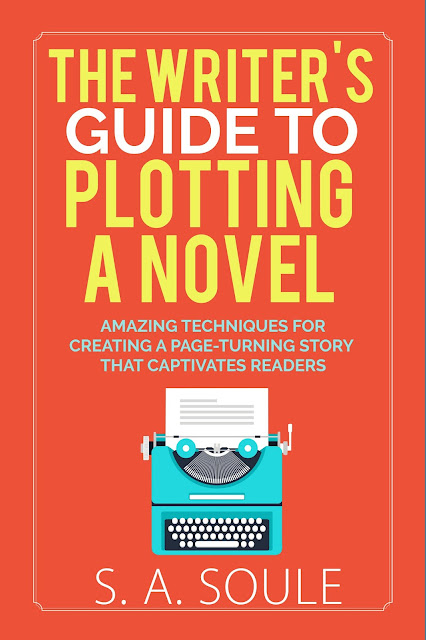
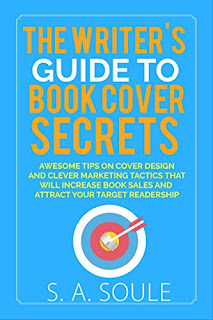




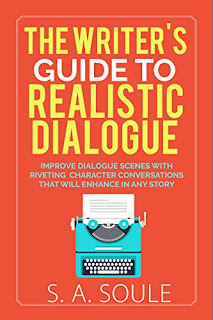

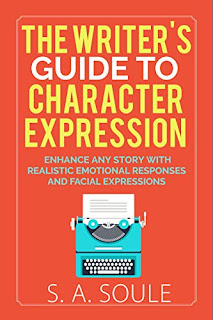

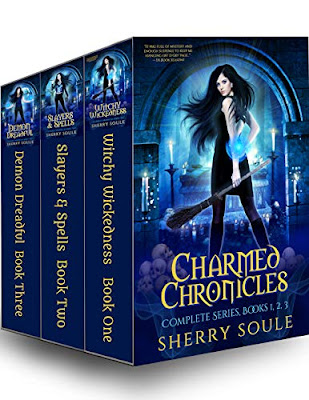
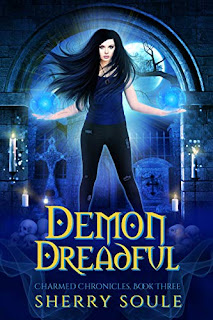


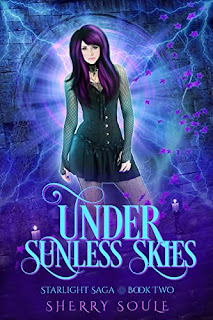

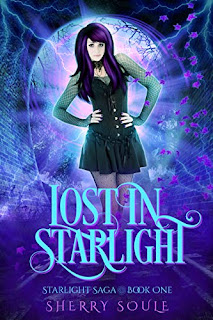
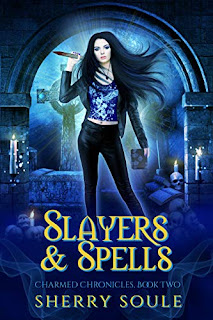
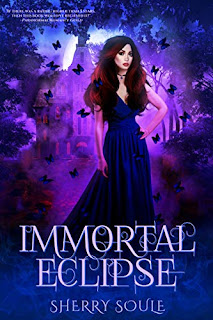
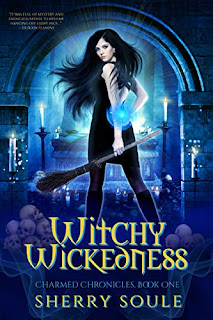

No comments:
Post a Comment